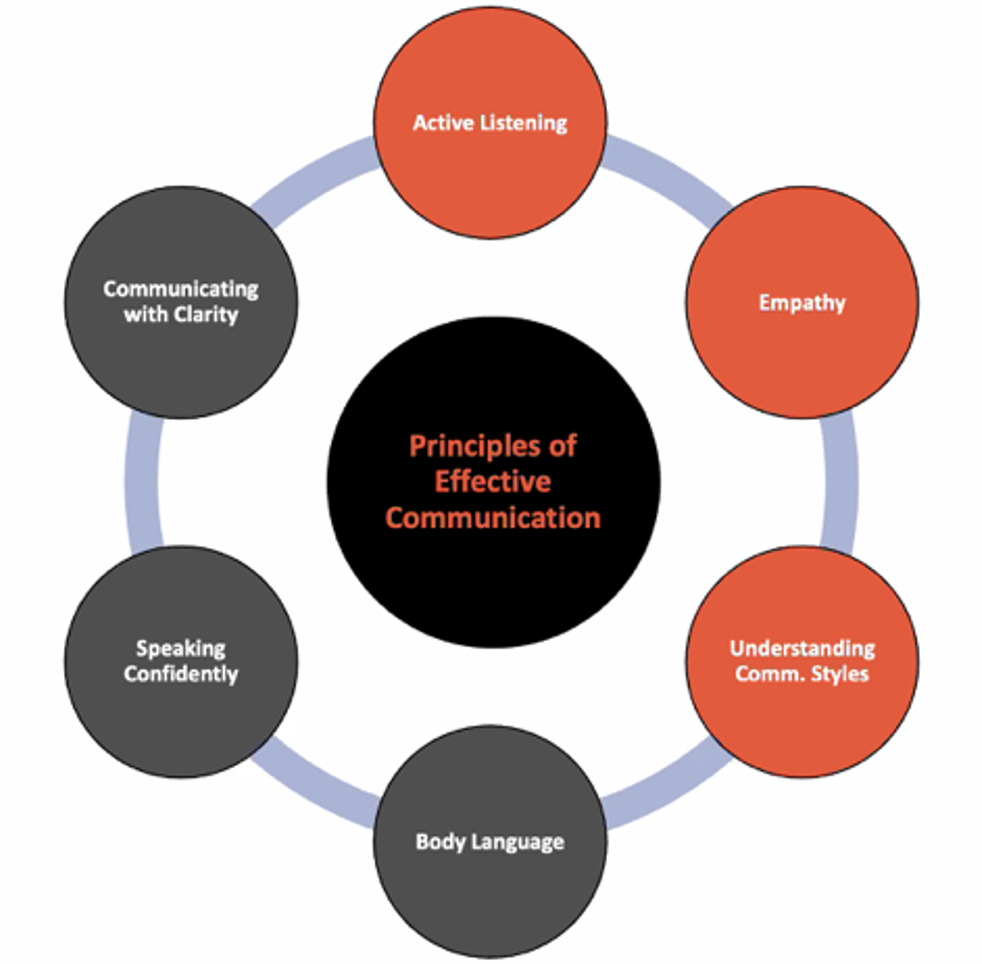Recently, Petra Coach presented a webinar, Communicate Like A Boss with Certified Petra Coach Bill Hankins.
You can find the full recording below.
Top Takeaways
6 Principles of Effective Communication
Great Speaker vs. Great Communicator
- A great speaker might know how to craft strong arguments, deliver their message, and move their audiences.
- Those things by themselves result is one-way communication and a short-lived connection with listeners.
- You see this in politics a lot (“vote for me”, “support this policy”).
- A great communicator, on the other hand, puts the listener before the message.
- For them, the focus is on creating a dialogue.
- The outcome is two-way communication with a deeper connection with the listener.
Snowball Effects of Poor Communication
- Delay or failure to complete a project
- Low company morale
- Missed performance goals
- Failure to close sales
- There’s really no area of the company that’s spared by poor communication by its leaders
“Seek first to understand, then be understood.” -Stephen Covey
Book Recommendation: 7 Habits of Highly Effective People by Stephen Covey
Orange = Understanding
Grey = Being Understood
Principle 1: Active Listening
“We have two ears and one mouth so that we can listen twice as much as we speak.” -Epictetus
Why is Active Listening Important?
- Communicates to the other party that you care about what they’re saying and builds trust
- Helps the speaker get their full message across
- Allows you to draw out information that might not otherwise be shared and can lead to better ideas and outcomes
What Great Listeners Do
- Ask questions and dig for deeper insight
- Create an environment where the other person feels supported and able to share ideas openly
- Treat conversations as cooperative, not competitive, with feedback flowing smoothly both directions
- Provide feedback in a way that is accepted
Techniques for Active Listening
- Practice being in the moment
- Ask clarifying questions
- Avoid the temptation to interject
- Pay attention to the speaker’s body language
Book Reference: Read People Like a Book by Patrick King
Principle 2: Empathy
Definition: The ability to stand in someone else’s shoes and see the world through their eyes; to understand how their feelings, emotions and needs impact their perceptions and actions
Techniques for Developing and Communicating Empathy
- Recall your own experiences
- See Principle 1 – listen!
- Acknowledge other viewpoints
- Allow yourself to be vulnerable, authentic and sincere
Principle 3: Understanding Communication Styles
- We all communicate differently
- Everyone has a unique style of communicating that is impacted by their experiences, personalities and environment
- Communicating to everyone in the same way is a fast-track to confusion, misunderstanding and conflict
Principle 4: Body Language
Eye Contact
- Your eyes can change the entire ton of a conversation or presentation, regardless of what you’re saying
- Key: Maintain steady eye contact
- Face to face: 5-second rule
- Speaking: scanning technique
- Eye contact one of the quickest ways to maintain engagement and create rapport
Body Positioning
- Eliminate barriers
- Get into the right posture
- Minimize movements
Gesturing
- Keep it waist-high
- Do what is natural for you
- Keep it spontaneous
- Avoid threatening gestures
Principle 5: Speak Confidently
People judge your confidence within the first few seconds of hearing you speak.
Tips:
Slow Down
- Speaking fast can make you sound insecure and nervous
- Causes a rise in your vocal pitch
- Solution: speak with a relaxed, deliberate pitch and cadence. It demonstrates you are in control and gives your words more weight
Speak with Authority
- Avoid tentative language
- “I’m sorry but…”
- “It’s my opinion that…”
- Avoid uptalk (ending the sentence on an upward note like a question)
Avoid Using Filler Words
Learn to Use Pauses
Benefits:
- Grabs the listener’s attention
- You sound more confident and in control of your thoughts
- Lets your message sink in
- Can persuasive (use the pause and nod)
How to Use:
- Pause at the end of a sentence where a period would be
- Pause after a key point for emphasis
- Pause when talking about a series of things or steps
Principle 6: Communicate with Clarity
Meet You Audience Where They Are – Understand Them
- What do they want/need to know?
- What will get in the way of you delivering your message?
- How can you personalize your message?
Be Concise
Talking more does not equal good communication.
Tips
- Understand why and when you do it
- Always lead with your main point
- Support with relevant details only and stay high-level whenever possible
Use Plain Language
“If you can’t explain it simply, you don’t understand it well enough” -Albert Einstein
ELI5 – Explain It Like I’m 5
Be Specific About Outcomes and Timelines
We are going to increase revenues. → We are going to increase revenues 20% by June 30 by offing this new product and entering this new market.
Like what you see? Register for our upcoming workshops & webinars today!





